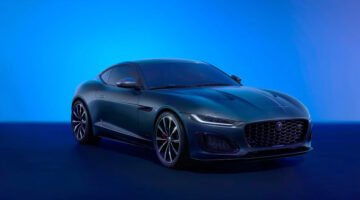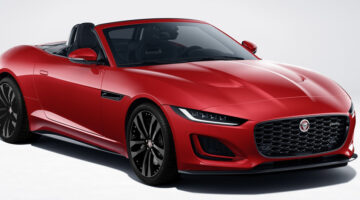*NOW UPDATED WITH VIDEO* Jaguar unveils its first ever all-electric vehicle – the I-PACE concept – ahead of a production version reveal in 2017 and an on-sale date in 2018.
| Electric motor | Power | Torque | 0-100kph | Top speed | Weight | Basic price |
|---|---|---|---|---|---|---|
| Permanent magnet electric motor | 395bhp | 700Nm (516lb ft) | 'around 4 secs' | TBC | 2100kg (188bhp/ton) | $68,000 (est.) |
Invalid Displayed Gallery
Jaguar has officially launched its first ever all-electric production vehicle at this year’s Los Angeles Motor Show. Prospective customers may have a long wait ahead of them though, since a production version of the new I-PACE concept, which will retain its name when it goes on sale in 2018, will make an appearance towards the end of next year. Prices are expected to start around $68,000.
Though the I-PACE features an all-new aluminium architecture, much of the underpinnings – including double-wishbone front suspension and the compact Integral Link rear suspension – have been borrowed from the F-PACE, Jaguar’s first ever SUV. It’s the electric powertrain though that requires a more thorough look. An ‘Electric Drive Unit’ is mounted to each axle, each of which splits 395bhp and 700Nm (516lb ft) of torque as well as the 90kWh lithium ion battery pack that’s mounted between them. The batteries themselves have been developed in-house (an offshoot of Jaguar’s new Formula E team), with charging times ranging from 80 percent after just 90 minutes, to 100 percent in a little over two hours.
Theoretical range of the all-wheel drive I-PACE is similarly impressive, Jaguar hinting that ‘more than 500km’ is achievable. Less impressive though is the weight: though the I-PACE is slightly smaller than the F-PACE SUV (around 50mm shorter, 90mm lower and 40mm narrower), it’s also around 240kg heavier at 2100kg. As part of ‘a radical departure for electric vehicles’, the design and electric powertrain layout also means the wheelbase is 115mm longer.
“It’s not just that we wanted to create something that was very different from anything else we do: we wanted the design to celebrate the new battery electric technology,” Jaguar Director of Design Ian Callum explains. “I was determined from the very beginning of this project to create a design which reflected this change in the mechanics of the car. This is what led to the sporty cab-forward profile rather than a car with a bonnet and an engine.”
Try to look past the 23in alloy wheels if you can. Without the need to fit an internal combustion engine under the bonnet, the front end features strong haunches and a distinct dip in the bonnet akin to the C-X75 concept first seen in 2010. F-PACE-style thin headlights and a bold front grille feature prominently, while sweeping lines down the flanks and a tapering waistline give the five-door SUV a coupé-like profile. There are no tailpipes, rear vents instead vectoring air away from rear wheel arches to reduce drag. Again, the thin taillights take inspiration from the F-PACE, as well as XE and XF saloons.
The cabin meanwhile is as modernist as you can get without physically becoming an Apple Mac. Three touchscreens – two 12in, one 5.5in – dominate the floating centre console, while slim lightweight seats are a conceptual favourite of Jaguar’s (you may remember the C-X17). The all-electric powertrain means the driver and front passenger seats are mounted further forward, allowing more legroom in the back and up to 530-litres of boot space.
Enjoy this Jaguar I-PACE Concept story?
You can check out more Jaguar features HERE
- Technical specifications available on page 2



